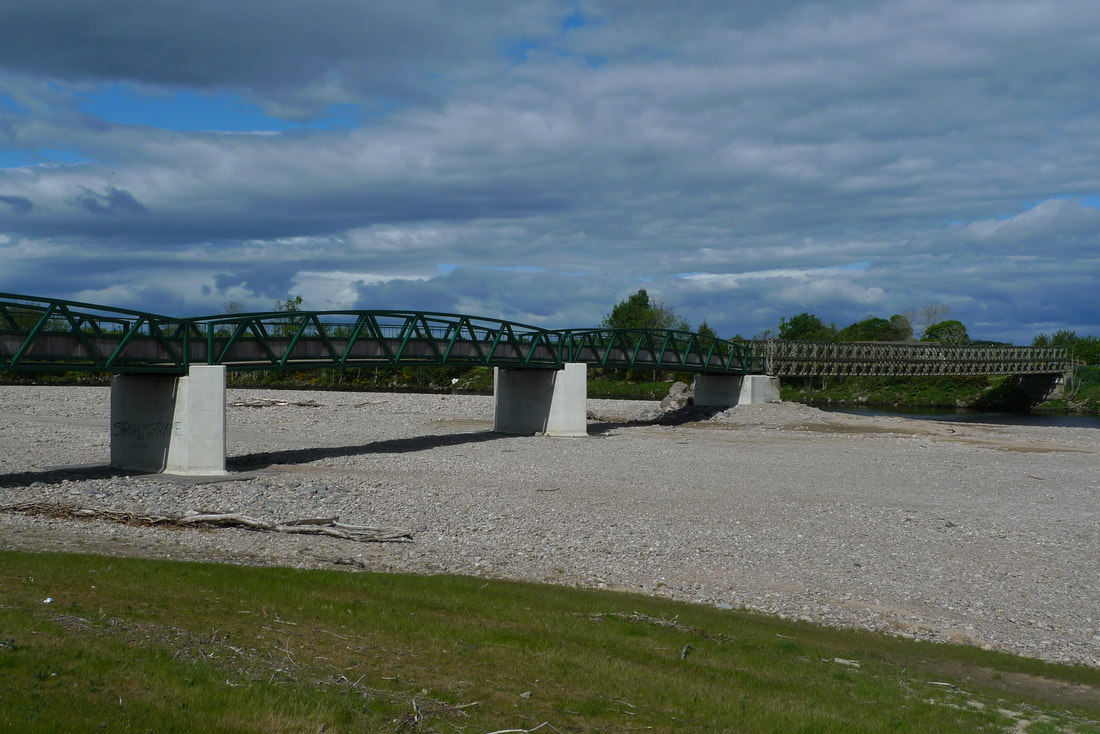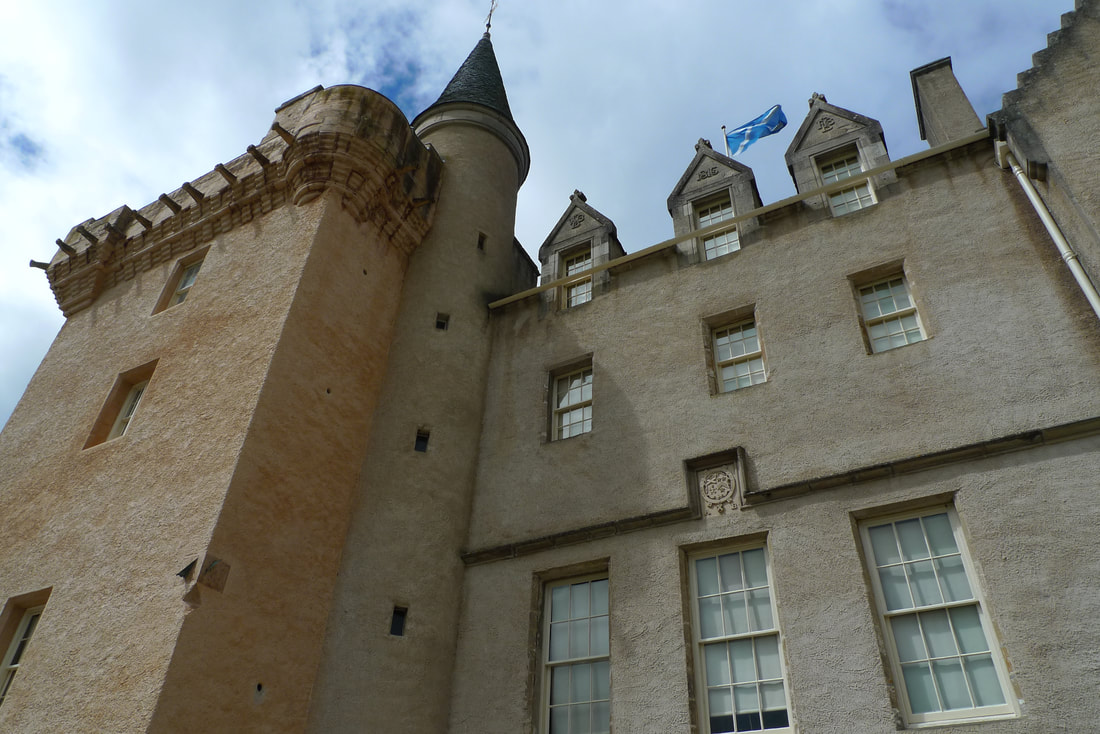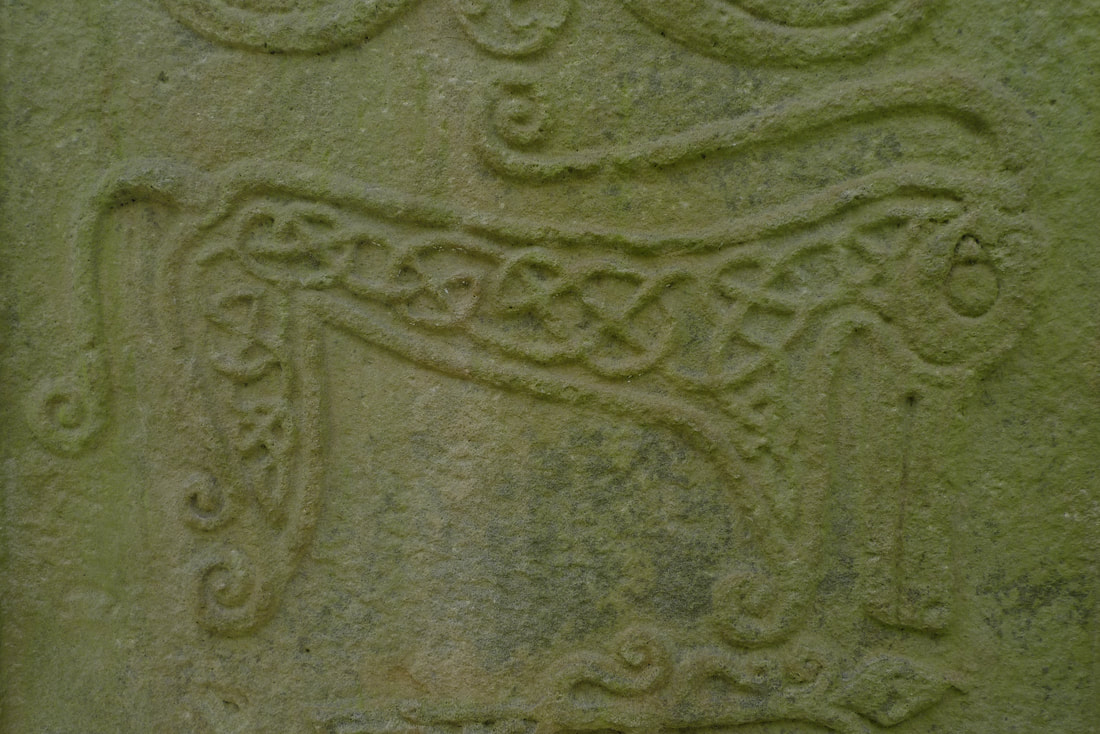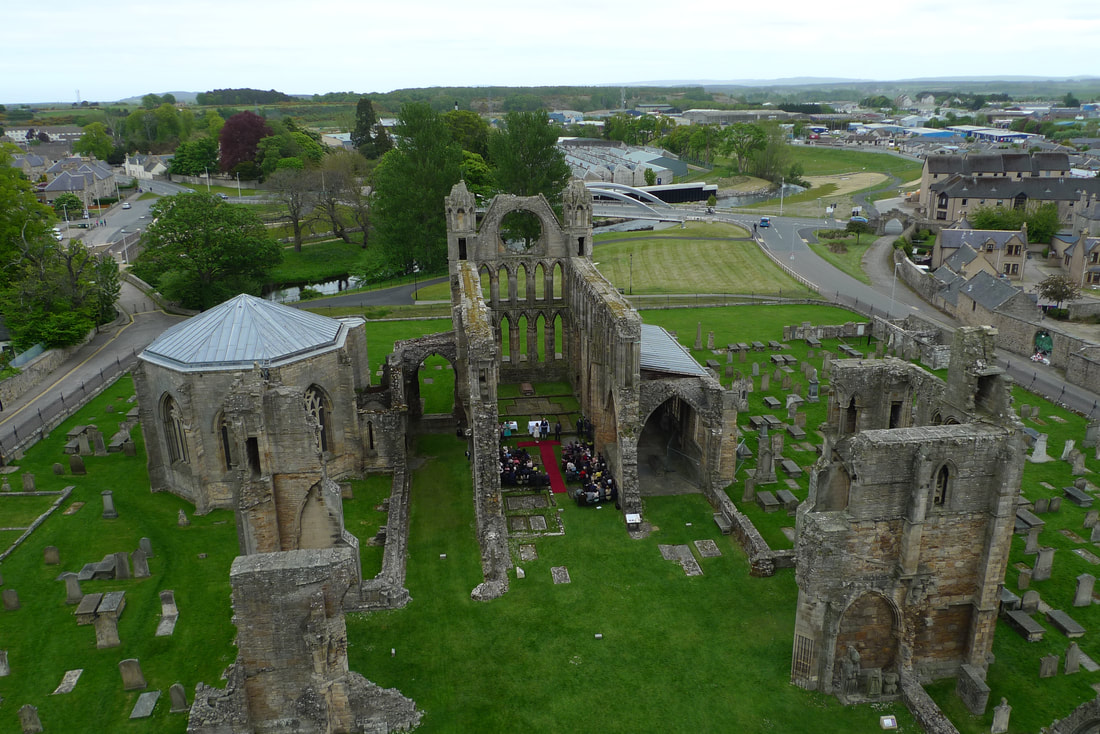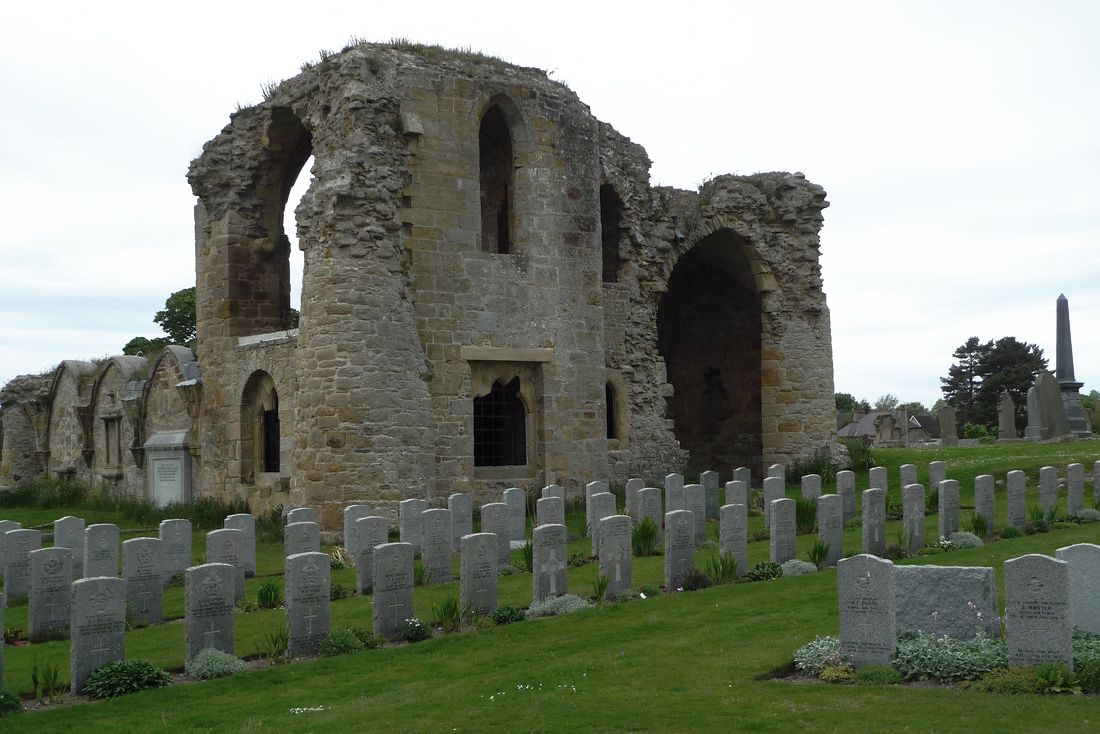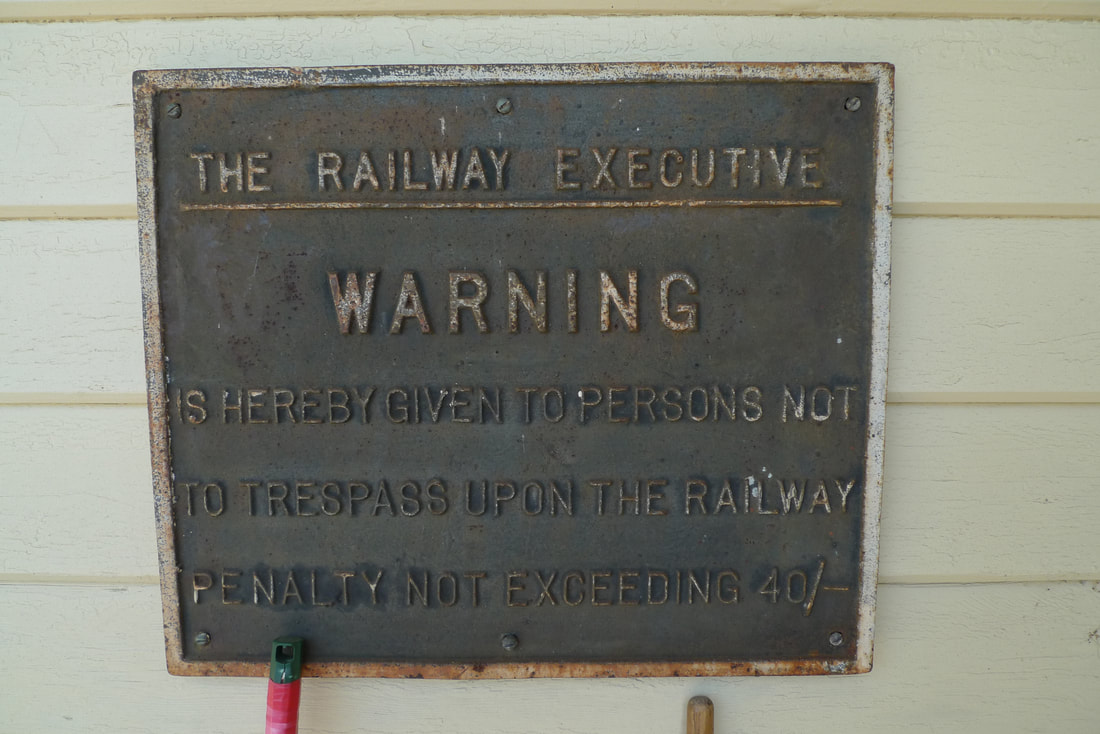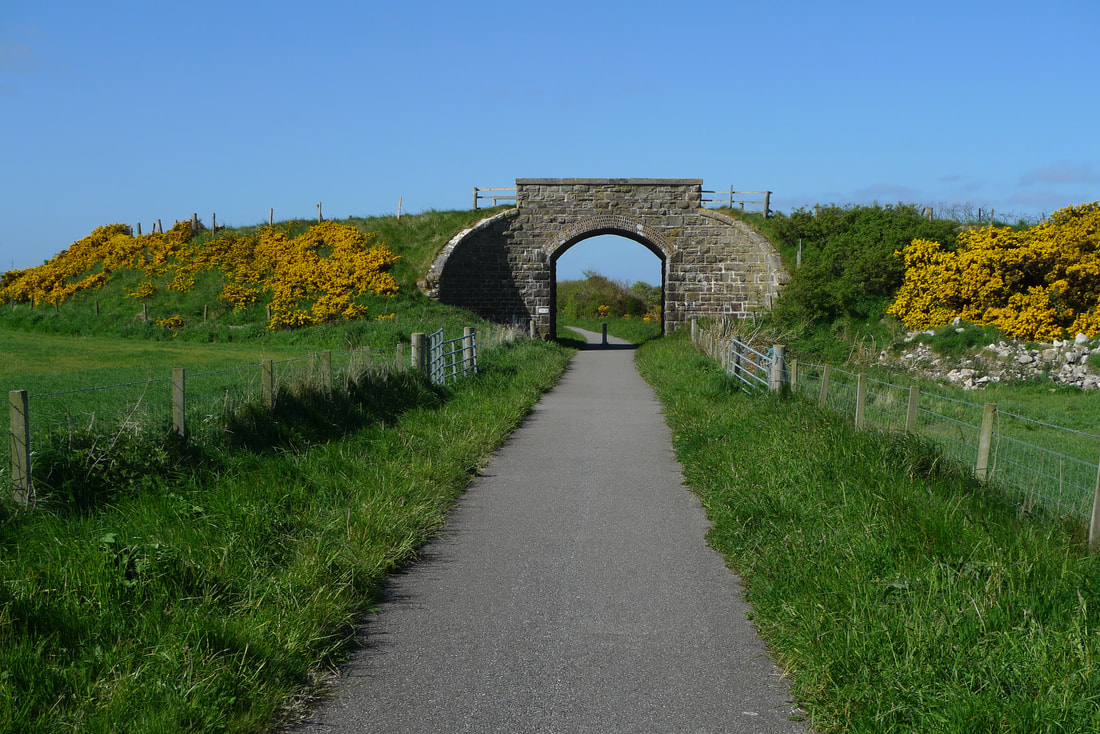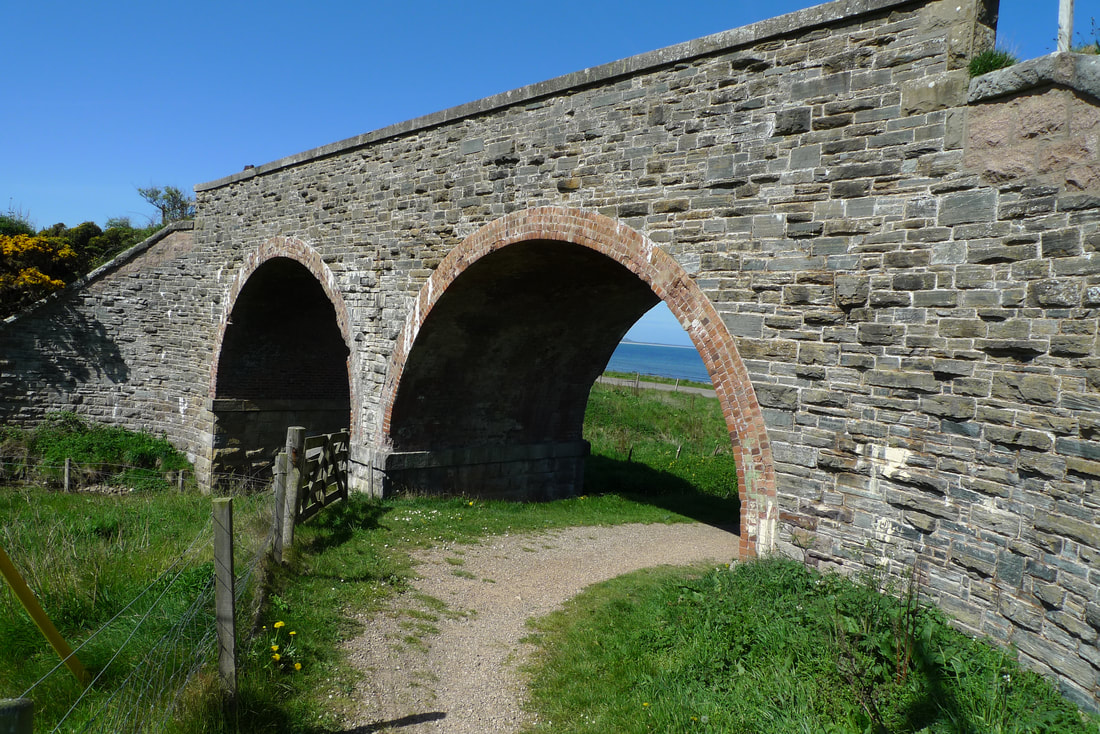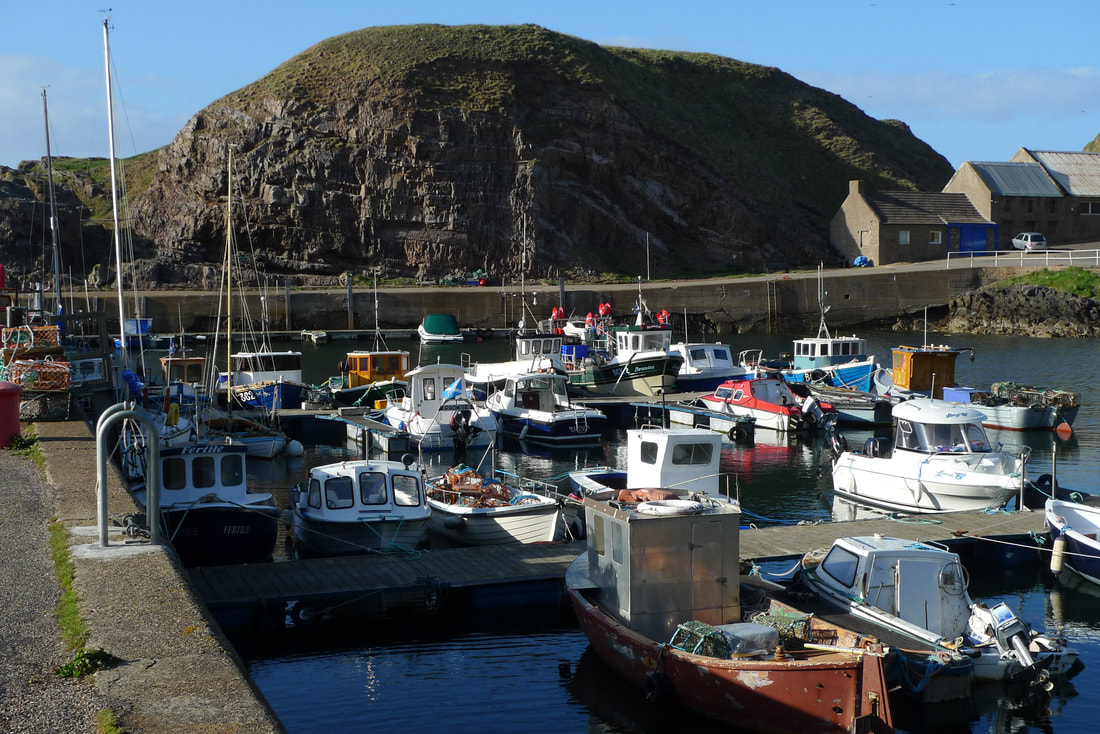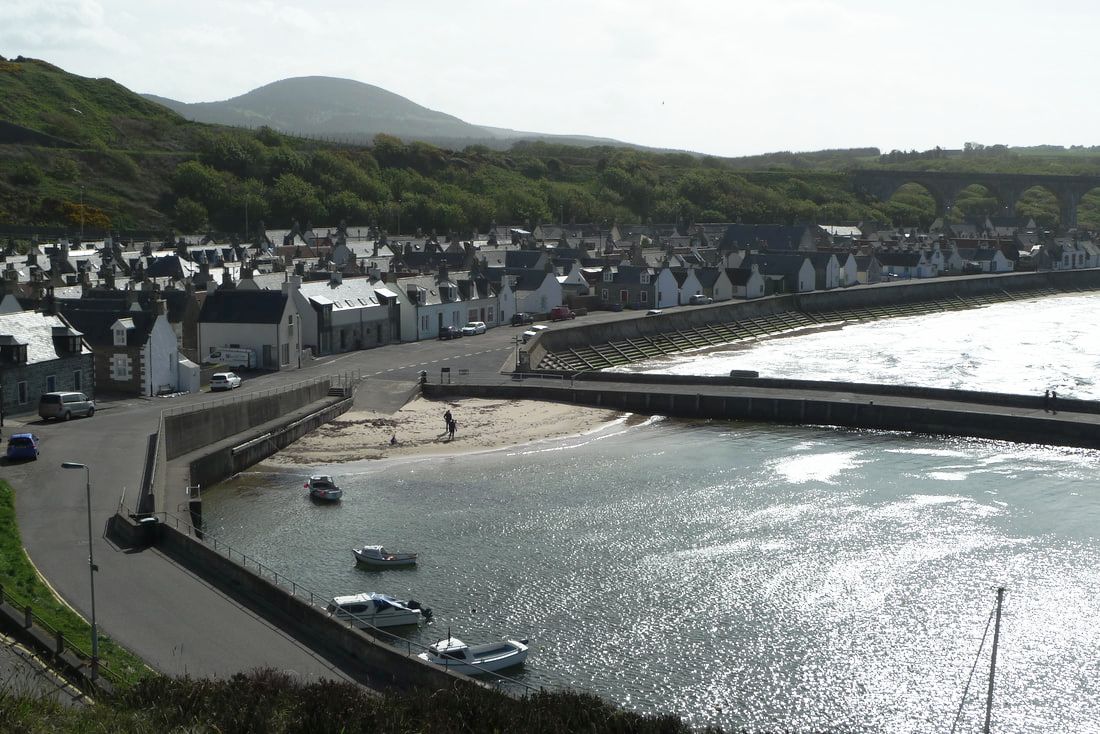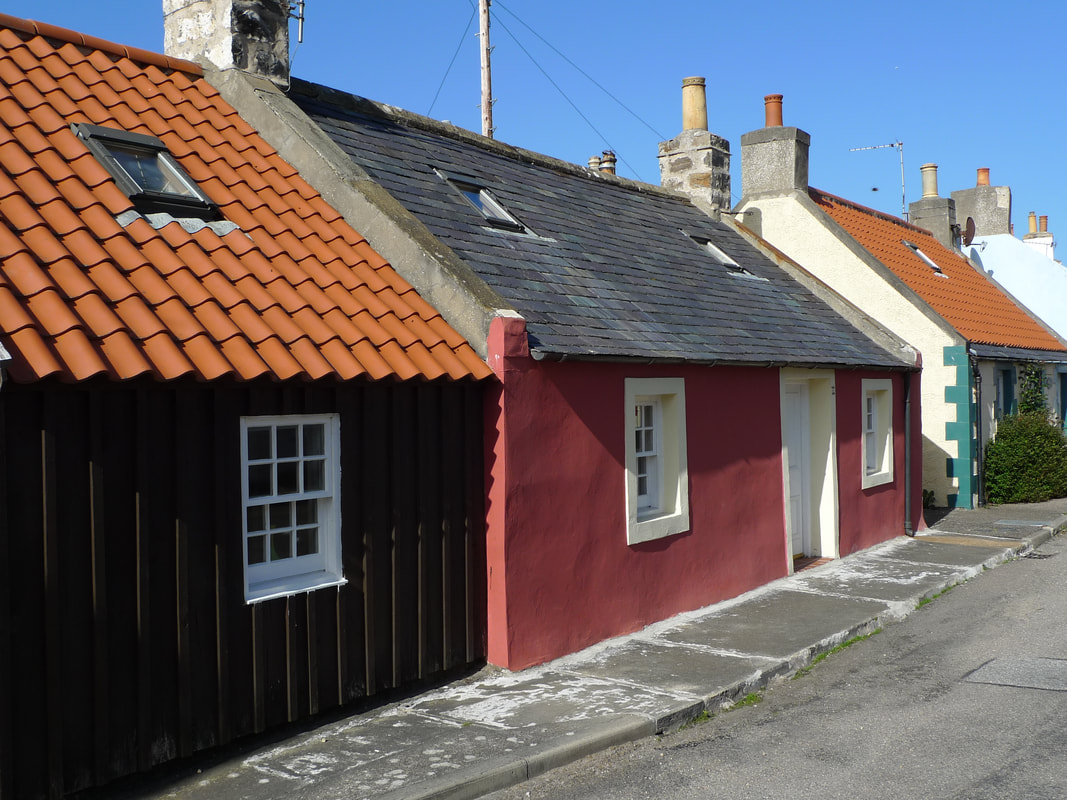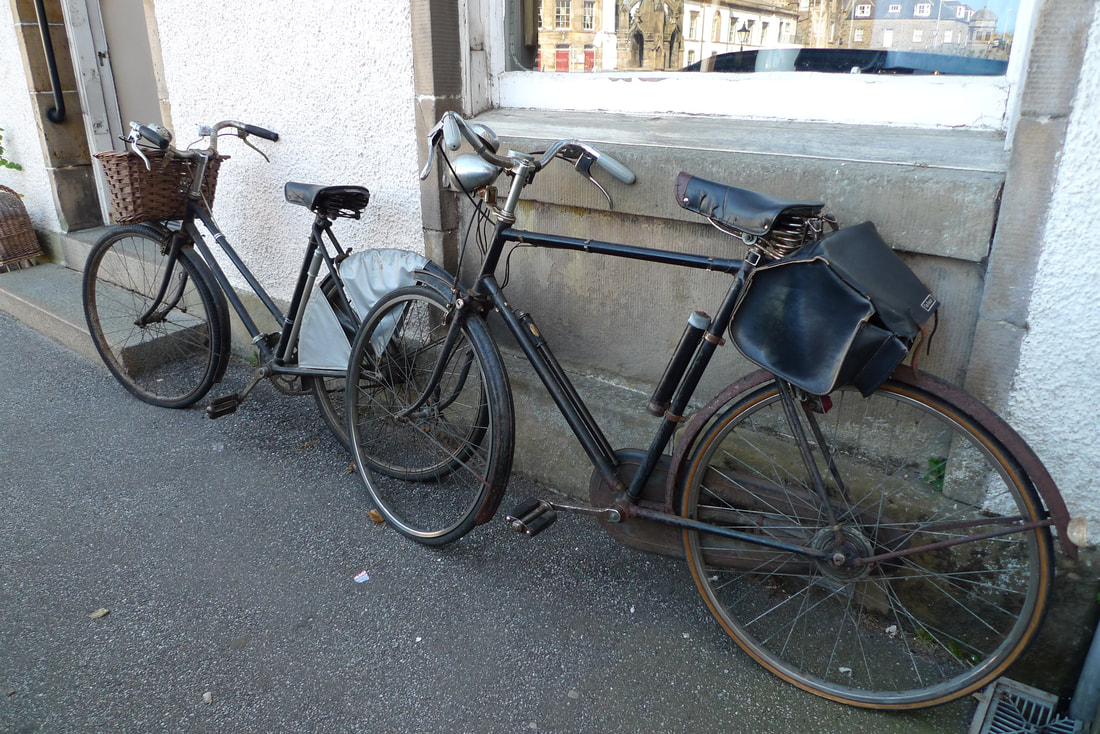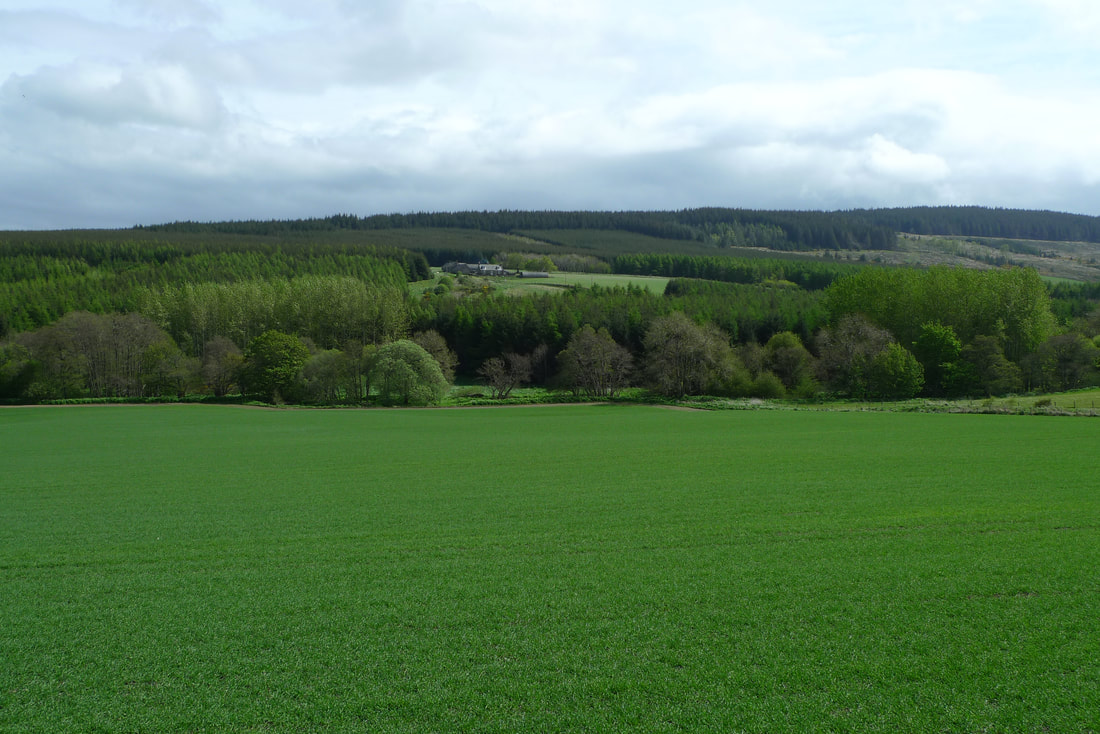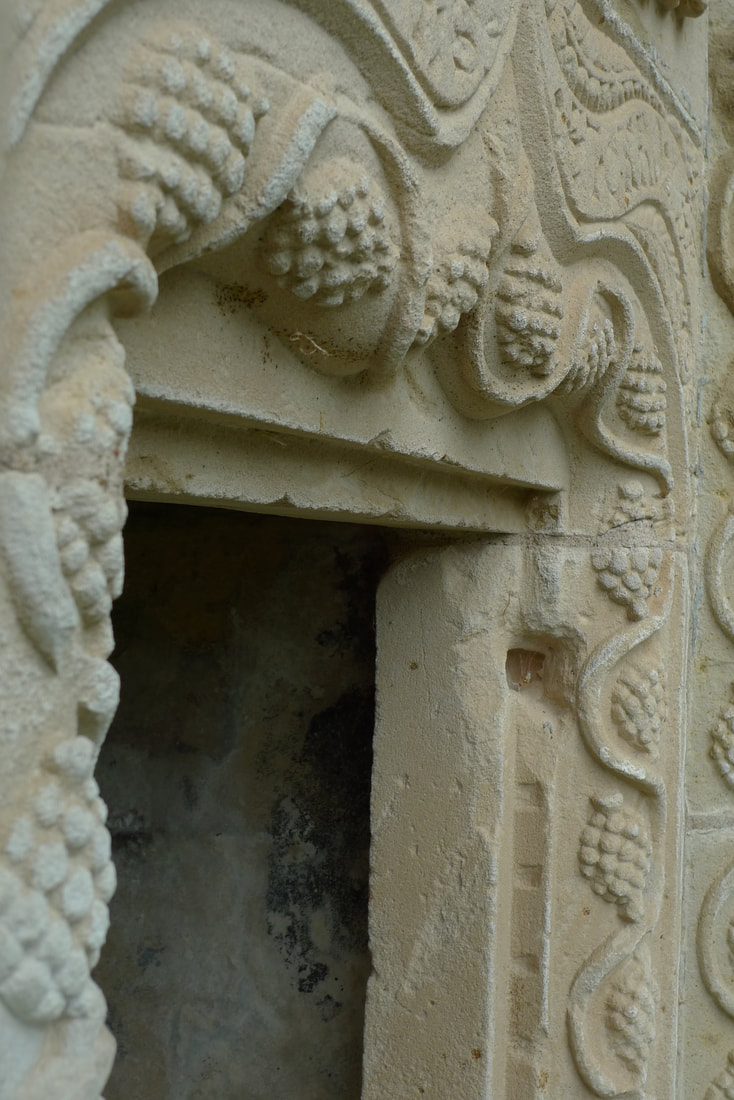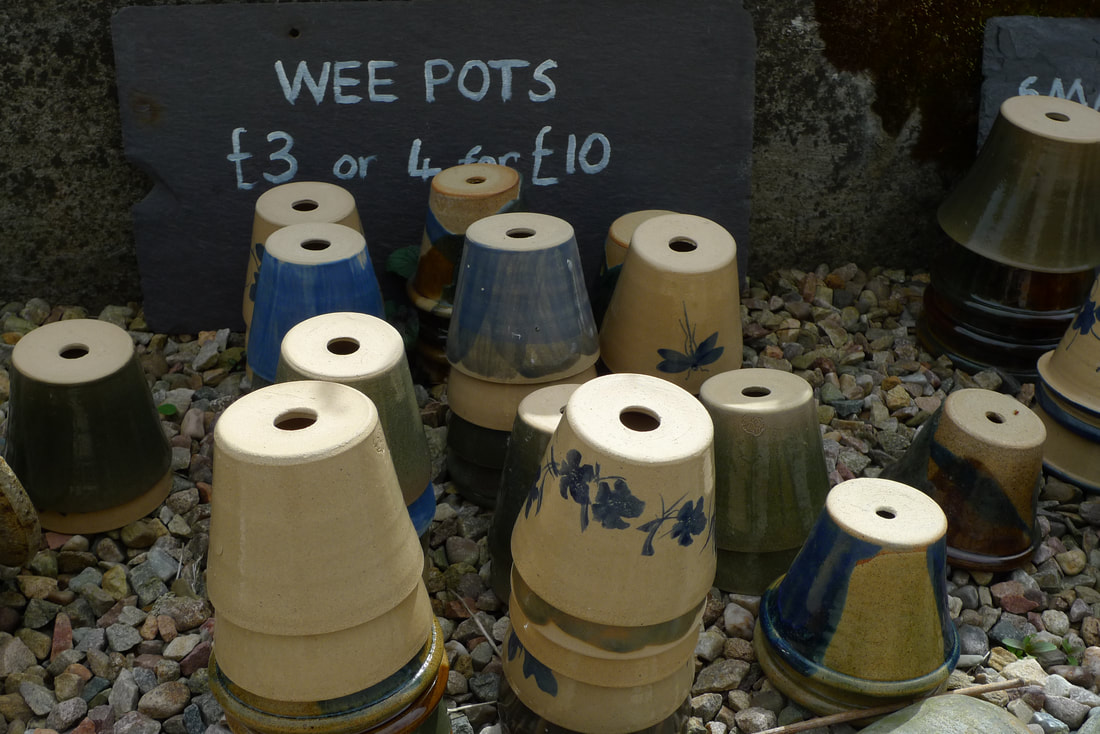|
Brodie Castle is in Moray, around 4 miles from Forres. It has:
Getting there from Forres The castle is on National Cycle Route 1. This means you can get to the castle avoiding busy roads. The highlight of the route is crossing the bridge over the River Findhorn. This location feels like somewhere else to me. I think of a massive country like America or Russia where rivers are enormous and sometimes dry up. There is an epic quality to the bridge, like one of those railway bridges across the Mississippi or the Volga. But you don't need to travel that far to experience such adventure. You can find it right here, in Scotland. The route then heads into farming country. The roads are quiet and the fields are lush. A castle or a home? Brodie is a mixture of architectural styles from the sixteenth, seventeenth and nineteenth centuries. Like many castles in Scotland it began as a fortress, a place to keep the occupants safe from attack. As time went on and Scotland became less dangerous the later additions to the building were about comfort. Brodie became more of a home and less of a castle. I think Brodie has a lived-in feel. There's a bit of wear and tear on show and this makes it feel quite homely. It is not as ostentatious as some of Scotland's other castles. The Dentist As you walk through the rooms of Brodie you will notice this mixture of castle and home. There is a spiral staircase that has steps of different sizes and depths. It was deliberately designed this way, to trip up any invaders who managed to make it inside. And then you have the many elegant rooms hung with Dutch paintings. The 22nd Laird of Brodie did the grand tour of Europe and came back with an impressive art collection. One of the paintings is called 'The Dentist'. It features a dentist holding a recently pulled tooth with tweezers. In the background there is a man holding the side of his face in pain. A visit inside the castle is by guided tour. The friendly and enthusiastic guides will tell you everything there is to know about the Brodie family. They will point out many of the fascinating objects in this home. The plaster ceiling in the dining room is incredible. It features thistles, flowers, a unicorn and more. The library is my favourite room. There are over 6000 volumes in here, stored in beautiful bookcases. I spotted a chair that coverts into a step ladder so that readers can get to the books on the high shelves. Gardening books feature quite heavily in the collection and that brings us to the subject of daffodils. Daffodils The 24th laird was a bit of a daffodil obsessive. In 1899 he grew 49 varieties in the gardens and by 1943 he had produced more than 400 varieties. This is why Brodie is now home to the National Daffodil Collection. When I visited it was not the right time of year to see the yellow blooms, but the gardens are full of labels with the names of the varieties. Some of these names are just wonderful, like 'Drumnabreeze', 'Moonspell' and 'Swansdown'. Even if the daffodils are not out there is still plenty to enjoy in the gardens. Come for the woodland walks to spot red squirrels. There's also the pond. That's what the Brodie's called it, but I think it is more of a loch. It is quite big and surrounded by woodland. If you come here with children they will love the Playful Garden. It's got lots of fun stuff to interact with, including Scotland's biggest bunny sculpture- Brodie the Bunny! The elephant stone Another large animal that can be seen at Brodie is an elephant. It is carved on a Pictish standing stone, located near the entrance gates to the estate. Perhaps it is not the most accurate depiction of an elephant, but I love it. I like the trunk, the tail and the knot shapes in the body. All good castles feature a tea room and Brodie is no exception. I recommend the shortbread. It is satisfyingly thick and crunchy. Getting here It is easy to reach Brodie using train and bicycle. It's around 30 minutes by train from Inverness to Forres. The castle is on National Cycle Route One and about 4 miles from Forres. The route from Forres, described at the start of this blog, features a spectacular bridge. See Brodie Castle and Cawdor Castle in one day
These 2 castles are about 12 miles apart. You can use National Cycle Route One to travel between them.
0 Comments
Forres is know for its floral displays, impressive architecture and the largest Medieval carved standing stone in Scotland. The town is in Moray, around 26 miles from Inverness. Here are the highlights from my visit to the town. Sueono's Stone This is one of the most impressive standing stones in Scotland. It's over 6.5m high. The protective glass box makes it stand out and draws you to it. The box seems to enhance the importance of the stone and provides a striking landmark for the town. The carvings on the stone depict a battle. It's got infantry, horse riders and even decapitated enemies. It was made sometime in the mid 800s to early 900s. Forres in Bloom The town has won numerous awards for its floral displays. Grant Park is the place to see them. During my visit the displays were not quite ready, but the park is always a special place to spend some time. My favourite view from the park looks out on a Tuscan bell tower. St John the Evangelist Scottish Episcopal Church has a tower that wouldn't look out of place in an Italian village. There's a great variety of architecture in Forres and this is one of the highlights. There's also a cute statue of a piper in Grant Park. Burn of Mosset There are nice paths with bridges to explore on a walk down by the Burn of Mosset. On a sunny day this is the place to head with a picnic. St Laurence Parish Church This is my favourite building in Forres. It is grand with beautiful stonework and a 120 foot high spire. During my walkabout the bells were ringing and the Minister was outside the door, greeting parishioners. Mercat Cross and Tolbooth This structure might look familiar to you. It is modeled on the Scott Monument of Edinburgh's Princess Street. With the Tolbooth nearby this part of Forres is an architectural delight. My favourite thing about the Tolbooth building? It's the stonework, with the different sizes and colours, and the arched windows. Favourite buildings The large number of impressive buildings in the town makes Forres a delight to explore. Some of my favourites include the Town Hall and the Red Lion Inn. Maclean's Highland Bakery You will find this bakery on the High Street and you should try one of their delicious pies. They have won awards and during my visit there was a window display devoted to the haggis and chicken and Scotch pies. More to discover I did not have time to see and do everything that Forres has to offer. This was a short visit, but I really enjoyed the town and would love to come back and spend more time here. Check out the Visit Forres website for ideas of more things to do. Brodie Castle It's just a 4 mile cycle from Forres to Brodie castle. Where to stay I stayed in the wonderful Knockomie Inn. Getting here
It's around 30 minutes by train from Inverness to Forres. I cycled here on National Cycle Route One. "Charming, unique and delightful- this sums it up". I wrote this in my journal after staying at the Knockomie Inn in Forres. It has the classic ingredients of a Scottish country house hotel. There's antlers, wood paneling and a bar stocked with over 80 single malts. It's also got a relaxed and homely atmosphere. Hotel location Knockomie is around a mile south of Forres town centre. It is set in 4 acres of gardens. History The architecture of the building is Arts and Crafts. It was built in 1812 as a villa for visiting judges. It was later owned by the Fraser family who made their money from tea plantations in India. Rooms There are 15 rooms, all with their own style. Mine had a neutral and calming decor. There are original features like the fireplace with an old servant bell and the large sash and case window. My favourite thing in the room was the writing desk. I sat here in the evening and kept my travel journal up to date. The only sound that could be heard inside the room was birdsong from the garden, a delight to wake up to in the morning. Dinner The small restaurant is cosy, the staff welcoming and the atmosphere informal. I felt like I was a guest in the home of a good friend, rather than some anonymous hotel. The starter of smoked salmon roulade with capers tasted sharp and fresh. For the main course I could not resist trying a fish n' chips with haddock in whisky batter. Although I couldn't detect much in the way of whisky flavour this was still a very good piece of fish and fluffy chips. The dessert was the highlight. A chocolate ganache that was rich and seriously chocolaty. Whisky bar Knockamie is in the Speyside whisky region. Benromach distillery is just 2 miles from the hotel, so I tried the 10 year old single malt. It has a golden colour and a wonderful flavour combination of fruit, malt and a hint of smoke. The lounge with the real fire is the choice spot to relax with your drink. The owners of Knockomie, Penny and Gavin, have gone to great efforts to make this place feel relaxed and informal. Although there is an air of luxury and grandness in the architecture and decor, you never feel that its stuffy. Gavin told me that they get a lot of cyclists staying here. This put me at ease as I always feel a bit self-conscious turning up at places like this. Especially after hours on the road and looking a bit dirty and disheveled. Breakfast I had poached haddock, served with a few grinds of salt. The fish was delicious and really didn't need anything else to go with it. Then a warm croissant and coffee. In these surroundings it is impossible to rush breakfast. Enjoy the architecture, the large windows where the morning sun floods in and the birdsong from the garden. Exploring Forres Forres is famous for its floral displays and gardens. Getting here
It's around 30 minutes by train from Inverness to Forres. I cycled here on National Cycle Route One.
It's like a dream. Travelling through tree tunnels, where the branches have joined together to arch over the road. This is what I enjoyed the most about this 26 mile section of National Cycle Route One. Miles of quiet, country roads with sections of woodland that turn the road into a vibrant green corridor.
Highlights of this route:
This route begins at the Spey viaduct. This is a magnificent structure and riding a bike across it is not to be missed.
It's 10 miles from the viaduct to Elgin. The path heads away from the coast, but not so far because some of these roads can get a dusting of sand.
The previous coastal sections of Route One, such as Cullen to Findochty, are spectacular. The inland sections don't have the harbours, rock formations and beaches, but there is still plenty to love.
One thing you must do is pull over and walk into the forests that border some of the roads. These woods reveal a world just as magical as the cliffs and coast.
Within minutes of walking into the forest I was struck by the stillness. I had this feeling that this place has been like this for hundreds of years and not much has changed. The forest floor was covered in moss that was decorated with tiny wildflowers.
It is tempting to put your head down and pedal fast on these roads, but that would mean missing out on experiencing the beauty of these forests.
It is also worth taking notice of the farmlands. I stopped at a pig farm and loved watching these creatures rooting about in the mud, sniffing and grunting.
Elgin
The sudden appearance of a busy town with traffic and lots of visitors is a shock to the system after the forest roads. The Cathedral is a good place to break the journey. It dates from 1224 and is one of the finest medieval buildings in Scotland. Although much of it is a ruin, plenty survives to make it easy to imagine the former grandeur of this place.
My favourite part of the building is getting to climb the spiral staircase of the towers. This gives a brilliant view over the ruins and the town.
There is some very fine architecture to discover. The octagonal chapter house is one of the best preserved parts of the site. Inside there is a stunning carved ceiling where you might just make out the remains of gold paint. There is a statue of a Bishop that tells of the quality of stone carving.
If you have time for a diversion you can follow my 24 mile cycle route to a nearby whisky distillery and Duffus Castle.
Elgin to Forres
This 16 mile section of the route has more of those quiet roads with vibrant green tree tunnels.
At Coltfield I found a group of friendly horses that were keen to investigate my bike.
Then I came across overgrown railway tracks from the closed Burghead branch line. Usually the tracks are lifted from disused railways, so it was unusual to find this. It is possible that the tracks have been lifted since my visit, but let me know in the comments.
Kinloss Abbey
Around 3 miles from Forres is the ruined Kinloss Abbey. It was founded in 1150 by King David 1 and run by a group of Cistercian monks from Melrose Abbey. The abbey declined in importance after 1560 when Protestantism became the religion of Scotland and Catholic abbeys were no longer needed. It explains the state of the buildings today and why there is very little to see.
However, the information boards provide a fascinating insight into the life of this abbey. What I did not appreciate was the large array of job titles and responsibilities that the monks had. For example, the Guest Master was responsible for travellers as abbeys provided accommodation to anyone who needed it.
The Guest Master must have been particularly busy in 1303 when Edward 1 and his army stayed for 2 weeks. They got through a year's worth of food and drink! There was also a Master of Novices who was in charge of training and coaching.
There is a handy floor plan that shows you the layout of the rooms in the abbey. Most I was familiar with, but this was the first time I had come across a Warming Room. There was no heating in the abbey so in the winter months this room helped the monks to stay warm after hours spent in the cold church and cloister.
There is a whisky distillery to see on the way into Forres. Benromach produces Speyside single malt whisky. There are tours and tastings.
Summary
This is an enjoyable section of National Cycle Route One. The highlight is the miles of quiet roads that are bordered with beautiful forests. Try some of the other sections of Route One in the Moray region of Scotland:
It is one of the greatest railway bridges in Scotland and you can walk or cycle across it. The Spey viaduct was completed in 1886 as part of the Moray Coast Railway. It crosses the third longest river in Scotland, the Spey. The bridge is around 290m long and riding across it is one of the top cycling experiences in the country.
The bridge is part of National Cycle Route One and around 4 miles from Portgordon and 10 miles from Elgin. The approach to the bridge is through a forested section. The trees hide everything and make the sudden appearance of bridge and river even more special.
Once on the bridge everything feels massive. The length of the bridge. The width of the river. The iron work on the bridge. It made me think of American railroads crossing legendary rivers, like the Mississippi.
The most impressive feature of the bridge is the central section where you enter this world of beautiful iron lattice and engineering genius. It is a special place to pause and take it all in. Being on a bike or walking allows you to really admire this, more so than if you were siting on a train. You can't do that anyway as the line closed in 1968.
Crossing this bridge was so special that I turned around and did it again! I have crossed quite a few bridges in Scotland and this one is easily the best.
What about the Glenfinnan Viaduct, I hear you ask? Yes, it is spectacular, but you cannot walk or cycle across it and that slower pace and freedom to stop makes it easier to appreciate the beauty of the Spey Viaduct.
Glenfinnan is also a very busy place in the height of the tourist season. The Spey Viaduct is less famous and I managed to get it all to myself when I cycled across it.
The West Highland Railway that crosses Glenfinnan is renowned for its scenic beauty. I am sure the Moray Coast Railway would receive similar plaudits if it was still open today. Not only does it have this viaduct, but there are magnificent viaducts in Cullen and superb coastal scenery. It is sad to see these structures no longer carrying trains that would bring visitors to the area, but I am grateful that they survive and can be enjoyed on foot or on two wheels. Near to the viaduct is Spey Bay station. It is now a private home, but I was lucky enough to be invited inside. This was a complete chance encounter and one that I am incredibly grateful for. It was a privilege to be invited into a private home that happened to be a disused railway station. Spey Bay is one of the few remaining stations from the closed Moray Coast Railway. National Cycle Route One travels over much of the old line. When I spotted this beautiful building I was astounded that it had survived when so much of this railway has long since vanished. The station is now a private home, so the last thing I expected was to be invited inside. It happened when I had stopped to take a photo of some of the surrounding countryside. A woman appeared and asked "would you like to see the station? I saw you looking at it. My husband's over there doing the gardening." She walked me over to the station and told me that their racing pigeons were starting to arrive home from Alnwick. "Took them three hours," she said, "faster than driving." I was so taken aback that I was being invited to see this wonderful building that I forgot to ask their names! The husband explained that they lived in the stationmaster's house and that he had converted the station building into a garage, workshop and billiards room. He told me that the billiard room was originally two rooms-one was the private waiting room for the Duke of Gordon. "He got the fireplace." That fireplace is still in use today. "We had the stationmaster come to visit. He was in his 90s. He was in charge of several stations in the area and they gave him a scooter to travel between them." There are some great artifacts from the original station like the benches and signage. However, he showed me some old photos that had a footbridge."They took that away and the beautiful signal box." Another photo, from the Second World War, showed the platform busy with servicemen. There had been a Royal Air Force base here and it explains the name of the adjacent road- 'Beaufighter Road.' "Ideal weather for flying up here", he said, "no fog." After my look around the station we shook hands. I felt very lucky to have been invited to see this. It is these kind of encounters that make travel special and rewarding. Spey Bay station is in Moray, around 5 miles from Buckie. The station opened in 1886 and closed in 1968.
Spey Bay station is near to the Spey viaduct, one of the most spectacular bridges in Scotland. You can cross it by bike or foot.
This 9 mile section of National Cycle Route One is on the Moray coast. It may not be as spectacular as the Cullen to Findochty leg, but it has plenty of interest. In particular, the remnants of the Moray Coast Railway and fishing heritage in Buckie.
Findochty to Buckie
Leaving Findochty the route heads slightly inland and then joins a disused railway path. I always have mixed feelings about the closure of railway lines. On the one hand it means the brilliant traffic-free cycle path that we can enjoy today, but it also means the loss of an important transportation link.
The bridge and platform at Portessie are reminders of what used to be. The last time that someone would have stood on this platform to wait for a train was in 1968, the year the line was closed.
Buckie
3.5 miles from Findochty is Buckie, which means place of the male deer in Gaelic. Buckie is one of the largest towns in Moray and it is somewhat of a shock to be thrown into a busier world. The approach into Buckie is through residential streets with large roundabouts. The harbour area is functional, with buildings associated with fish processing. The queues at the 'Eat Mair Fish' shop are testament to the popularity of locally caught seafood. Buckie feels like a place to pass through rather than stop in, but it is worth taking a look at Cluny Square where there is a fine ensemble of Victorian buildings. Pause at the war memorial where the faces of the soldiers are detailed and beautiful.
Fishing heritage in Buckie
Take a wander down the streets with rows of granite and sandstone cottages. These had been built with money from the boom years of the herring industry in the 1800s. They had an upstairs that was used for storing and repairing fishing nets. This was reached by a ladder on the outside of the house, so that the ground floor living area was kept free of muck. There's more to learn about this legacy in the Buckie and District Fishing Heritage Centre. Although small, it is full of interesting things. The boat models are incredibly detailed. Look through a window on the lifeboat and you will see a cup of tea resting on a sink. Railway structures After a few minutes of cycling you will reach another reminder of the railway era, a gorgeous iron footbridge at Buckpool.
Further on and there is a double arched bridge.
Portgordon
Two miles from Buckie there is a sweep of sand and coast that leads you into Portgordon.
Portgordon was founded by the 4th Duke of Gordon. It was once a busy fishing village, but the harbour is now mainly used for pleasure vessels.
The village was once nicknamed 'Paraffin City.' The street lighting was powered with paraffin and it was one of the last settlements in the area to get electric lights. Portgordon had an important role in the Second World War when three German spies turned up at the train station. The spies had been dropped off by an aircraft and made their way by dinghy to the mainland. The stationmaster was suspicious and contacted the police who made an arrest.
Like the other coastal villages on this section of Moray's coast it is surprisingly low key in its offerings for visitors. It has a perfect location that seems ripe for things like seafood restaurants and gift shops, but the lack of such offerings is what makes these villages special. You get to enjoy them as they are without distractions and the crowds that would come for the distractions.
4 more miles on National Cycle Route One will take you to the Spey viaduct, one of the most magnificent bridges in Scotland.
It is only 4 miles from Cullen to Findochty, but it's one of the best coastal bike rides in Scotland. This short stretch of National Cycle Route One packs in beaches, rock formations and seaside villages.
Cullen Cullen has a grand backdrop of railway viaducts, a sweeping bay and a good selection of antique shops. It is also where Cullen Skink, Scotland's famous fish soup, was created. The cycle route leaves Cullen on the railway viaducts, the perfect spot to look down upon the sparkling blue sea and inviting sands of Cullen Bay. Find out more on my reasons to visit Cullen blog
Bow Fiddle Rock
15 minutes of cycling will take you to the Bow Fiddle Rock, one of the most spectacular coastal formations in Scotland. Find out more on my blog about the Bow Fiddle Rock
Three creeks shore
It is not just the Bow Fiddle Rock that is impressive around here. An area called three creeks shore has a shingle beach, caves and rock formations that were formed 650 million years ago. It thrives with bird life, including Common Eider Ducks, Rock Doves and Shags.
Portknockie
This village is close to the Bow Fiddle Rock. One of the most striking things about it is the position of the houses, atop the high cliffs.
The harbour is sheltered by a huge rock formation and has an outdoor swimming pool.
Findochty
It takes less than 15 minutes to cycle along the gravel track to the next village, Findochty. This is my favourite part of the whole route. It is worth parking your bike and walking to the edge where the coastal scenery reveals itself in all its glory. Sea birds put on a show by swooping elegantly to land on precarious cliff edges.
The approach to Findochty is glorious. The downhill gravel track means you can ease off the pedals and sit back and enjoy that first sight of the white church sitting above the village and the sweep of a sandy bay. That church is what gives the place its distinctive look and makes the arrival into the village so special and memorable.
Findochty, despite its obvious beauty, is not a touristy place. Gift shops, seafood restaurants and ice cream parlours are lacking. It surprises me that this location has not been exploited for tourism, but that's also what gives it such appeal. You don't feel like you have ended up somewhere that everyone else has ended up in just because it has 'stuff' for visitors to do. Instead you get to enjoy the place for what it is and it feels all the more special for that.
A wander around the streets reveals pretty cottages that were built for fishing families.
And it is worth a wander up to Findochty Church, the building on the elevated position that makes the village look so impressive and distinctive. It dates from 1863 and for the next 24 years, until a bell was installed, a fog horn was used.
How to get here
The path between Cullen and Fincochty is part of National Cycle Network Route One, but if you are not doing that route the best way to reach the path is from Keith. There's a train station here and it is a 14 mile ride using quiet B-roads to get to Cullen. There is a full description of this route in my blog about the Willows Tearoom. Scotland has some magnificent coastal rock formations. One of my favourites is the Bow Fiddle Rock on the north-eastern coast. It is near Portknockie in Moray. The rock was sculpted by the crashing waves of the North Sea into a shape that looks like a fiddle bow. Photos of the rock look good, but they don't prepare you for how magnificent it is in real life. It is not just the first sight of this uniquely shaped rock that captivates you, but it is the sense of where you are. On the edge of Scotland, on a cliff looking down at something that was created by the might of the sea. The stack is teaming with seabirds, like herring gulls. Their cries drown out the sound of water lapping up to the rock. And then your eye is drawn beyond the rock to the endless expanse of the sea. It is a place where it is easy to appreciate the beauty of our planet. Come here and take a seat for a while. Absorb everything you see, hear, smell and feel. Whenever you need a moment of escape let your mind to take you back to the day you visited the Bow Fiddle Rock. How to get here
The Bow Fiddle Rock is about a 15 minute walk from Portnockie Harbour, along the cliffs path. From Cullen it is a 15 minute cycle. Cullen is on National Cycle Network Route One, but if you are not doing that route the best way to reach the town is from Keith. There's a train station there and it is a 14 mile ride using quiet B-roads. There is a full description of this route in my blog about the Willows Tearoom. For ideas of things to see and do in Cullen, visit my blog about Cullen and my review of the Cullen Bay Hotel. Name a Scottish coastal town. I imagine you are thinking of somewhere like Oban, Ullapool or Saint Andrew's. Did you think of Cullen? I don't think it is on the radar for many visitors, but it should be and this is why: Beaches, the sea, the harbour They are the building blocks of a great coastal town. Cullen has the beautiful beaches, the harbour with the bobbing boats and the sea views. Seatown Seatown is an area of Cullen that once housed a fishing community when the town was a major fishing port. It is characterised by small cottages, many brightly painted with front doors that open directly onto the winding streets. The dense form of Seatown makes it difficult to drive through, so it is a pleasure to wander here, uninterrupted by traffic. I will always remember the smell of the salty sea mixed with freshly laundered clothes on washing lines. The Ice Cream Shop You expect to get a good ice cream in a coastal town. The Ice Cream Shop on Seafield Street does a fine range of flavours. I tried both the rum and raisin, and the coffee. The coffee one, laced with chocolate chips, was particularly delicious. For the perfect spot to eat your cone head to the nearby benches that overlook Seatown and the harbour. Cullen Skink at the Cullen Bay Hotel Seafood is the other type of cuisine that a coastal town should do well, and Cullen has a major claim to fame in that department. Cullen Skink, the famous Scottish dish of fish, potatoes and cream, was created here. The Cullen Bay Hotel does one of the best I have tasted and it is also the host venue of the World Cullen Skink Championships. I stayed at the hotel and you can read my review. Antiques Cullen is a bit of a treasure trove for antique lovers with Shops like Cullen Antiques Centre and Bits N' Bobs packed with curiosities, like these vintage bicycles in the photo. Railway viaducts The Moray Coast Railway must have been one of the most scenic lines in the country, until it was closed in the 1960s. One very visible legacy of the railway is the viaducts in Cullen. They provide a spectacular focal point in the town and you can still walk or ride a bike across them to experience the views that train passangers would have enjoyed. Deskford Church and Garden Galleries Around 4 miles south of Cullen there is a ruined sixteenth century church with a beautiful carved Sacrament House. Nearby is the Deskford Garden Galleries with antiques, art and a wonderful vintage tea room experience. Read my blog about this place to find out more. Bow Fiddle Rock One of Scotland's most spectacular coastal rock formations is just a 15 minute bike ride from Cullen. The rock is located closer to the next town, Portknockie, but is very easy to visit from Cullen. My blog on the Bow Fiddle Rock gives you a good idea of what it is like to experience this place.
How to get to Cullen Cullen is on National Cycle Network Route One, but if you are not doing that route the best way to reach the town is from Keith. There's a train station here and it is a 14 mile ride using quiet B-roads to get to Cullen. There is a full description of this route in my blog about the Willows Tearoom.
Cullen Skink is one of Scotland's most famous dishes. It is a fish soup made with potatoes, onions, milk and/or cream. It is delicious and one of my favourite Scottish foods.
I have to confess that, until recently, I had no idea there was an actual place in Scotland called Cullen, and that the soup originated here. I also discovered that Cullen is a coastal town famed for its beaches, harbour and relaxed atmosphere. That was it, I had to go! And where better to try the soup than the Cullen Bay Hotel, the host venue and previous winner of the Cullen Skink World Championships? Hotel location Overlooking Cullen Bay this hotel has probably the best location in town for views.
A short walk from the front door and you are on the beach, via the golf course. A main road, the A98, is right in front of the hotel and you must cross this to begin the walk down to the beach. The hotel is not in the centre of the town, but you can walk there in about 15 minutes.
This area of Scotland, the Moray coast is spectacular, but does not seem to get talked about as much as some other parts of the country. How many people would say Cullen when asked to think of a Scottish coastal town or village? I felt like I had come across an undiscovered part of the country, but that's just me. If you are looking for places in Scotland that might be less busy with visitors then Cullen could be a good choice. Rooms There are 14 rooms and some have sea views, but they are more expensive. My room, without a sea view, was cosy with very comfortable beds.
Dinner
Coming to the restaurant was like one of those TV ads for the perfect holiday. Someone shows you to your table and it has the most gorgeous view of the sea. The sky has no clouds and the water is a tranquil dark blue. It was time to try Cullen Skink, in Cullen. I was was surprised to see not one, but two types of Cullen Skink on the menu. There was the traditional option and there was 'Cullen Skink With a Twist.' The 'twist' version had sherry, port jam and smoked haddock marinated in dark molasses. I wanted to try the original version and it more than lived up to my expectations. It was thick and creamy, with succulent fish and the satisfying potato chunks that make this such a filling meal. I have tasted a lot of Skinks and this was definitely one of the best. Actually, it was the best because it was delicious and I was eating it in Cullen with this magnificent view. For my main course I had the Fisherman's Pie, with salmon, haddock and prawns. It looked small, but it was packed with chunky bits of fish and a thick, creamy sauce.
Stroll on the beach after dinner
Take advantage of the hotel's location and head down to the beach after dinner, particularly in the summer when it is still light at 9pm.
From the hotel's front door it is a short walk across the golf course to the beach. The sand is soft and there might be a gentle wind sweeping across it. Let your mind relax and focus on the waves rolling in. Turn around and look back towards the hotel where you had just enjoyed Cullen Skink and you will feel very fortunate to have experienced this place.
Look out for the wildflowers growing here.
The sunsets are spectacular and during my stay I noticed that someone had written in the sand "last night here. Maggie is sad." I know exactly how she felt, it is a place that you don't want to leave.
Breakfast
The breakfast menu here is excellent with items like smoked salmon and scrambled eggs, grilled haddock with a poached egg and haggis with poached eggs. I tried the French toast and it was perfect. How to get here Cullen is on National Cycle Network Route One, but if you are not doing that route the best way to reach the town is from Keith. There's a train station there and it is a 14 mile ride using quiet B-roads. There is a full description of this route in my blog about the Willows Tearoom.
If you like your tearooms to be traditional, joyful and somewhat off the beaten path then The Willows is the place to head for. It's a world of white table linen, china decorated with flowers and dainty cakes. You will find it, not in a town, but in farming country, around 4 miles from the Moray coast.
Highlights of This Route
Getting There The journey is half the fun of visiting The Willows. You must look for a dusty path in the depths of Moray's farming landscapes. It's a slight diversion from the coast, not far from Cullen, so if you are on the coastal cycle route (National Cycle Network Route One) it's easy to pop by. Or if you are looking for the nearest rail access head to Keith- it is a 10 mile cycle from there.
Directions from Keith Station
Keith is about one hour from Inverness or Aberdeen by train. Leaving Keith station you are aiming to get onto the B9018. From the train station you cycle down Station Road. Look for a path on the left, which takes you along a road that links to the B9116- Newmill Road. Take a left here. When you reach a crossroads you turn right onto the B9017. This road will join the A95 where you turn left and then the next left is for the B9018, signposted for Cullen. B-road Donkey The B9018 is wide and does not get a lot of traffic. It's got some ups, downs and curves so there is a bit of variety. The scenery is agricultural and although it is not the most exciting road in Scotland the peace and quiet and smooth tarmac make for very good cycling. During my visit I had the wind behind me and I sailed along at a nice pace- the long and empty road ahead providing a wonderful sense of freedom.
There was a lot of livestock in the fields, including sheep, cows and a very large bull with a nose ring who stared at me. I pulled over to say 'hello' to a group of donkeys, but they bolted off. Then one of them plucked up the courage to wander back to the fence and check me out. When his buddies could see that I was not a threat they all copied the brave donkey and returned to the fence, sniffing me for signs of food.
Berryhillock
There were several wind turbines on the hillside and I spotted a farm sign that had both a picture of a cow and a wind turbine, a reflection of the mixed use of farming land in this area. There is a place with a lovely name on this road- Berryhillock. Here there is a wooden shelter with a fantastic display of flowers. Inside the shelter there was a poster promoting an evening event with the local heritage group- there would be talks, including one on Deskford witches, tea and biscuits. Opposite the shelter is an attractive garden with a model windmill.
Less than 5 minutes cycling from Berryhillock will bring you to Deskford Church. This is a peaceful spot with an historic building which you are likely to get all to yourself. There is an iron gate with a heavy bolt to slide to gain access to the church yard. The church dates from 1540 and is now a ruin with no roof and holes where windows and doors once were.
The standout feature here is the sacrament house, a decorative storage cupboard that had been used to keep the wafer that is transformed into the body of Christ during Mass. The stone carving is impressive, particularly the angels with flowing frocks.
Just five minutes cycle from the church will bring you to South Lissens Pottery. It's a great place to hunt for a unique souvenir from the area. How about a Cullen Skink bowl? One of Scotland's most famous dishes, this hearty fish soup, was invented just up the road in Cullen.
The dusty track to the side of the pottery takes you to Deskford Garden Galleries and The Willow Tearoom, also located in farm buildings.
Raspberry, Rose and White Chocolate
When I opened the door to the tea room it was like stepping into a different era. The Shadows were on the music player and the tables were set out with linen, napkins and vintage china. What a surprise to find such a place in the depths of Scotland's farming landscapes! The loose leaf tea selection is excellent. This is a place where tea is a passion. I ordered the Russian Caravan which has a sweet and smoky taste. The home baking is no less impressive. My raspberry, rose and white chocolate cake was perfection and looked so dainty (see image at top of the blog). During my visit there were just two other women who hummed along to the soundtrack of 50s and 60s tunes. However, there are a lot of tables and the exciting menu of full meals and afternoon teas was a sign that this is a popular place. It's not just the tea room to see here. The complex of buildings includes a lovely conservatory and rooms packed full of antiques to buy. There is also a pond in the garden with benches. I sat here for a few minutes watching songbirds gathering up twigs and bits of grass for their nests.
When I got back on my bike I felt really happy. This place was such a chance find and a wonderful experience that it put a spring in my pedalling.
|
Categories
All
Archives
July 2024
|



